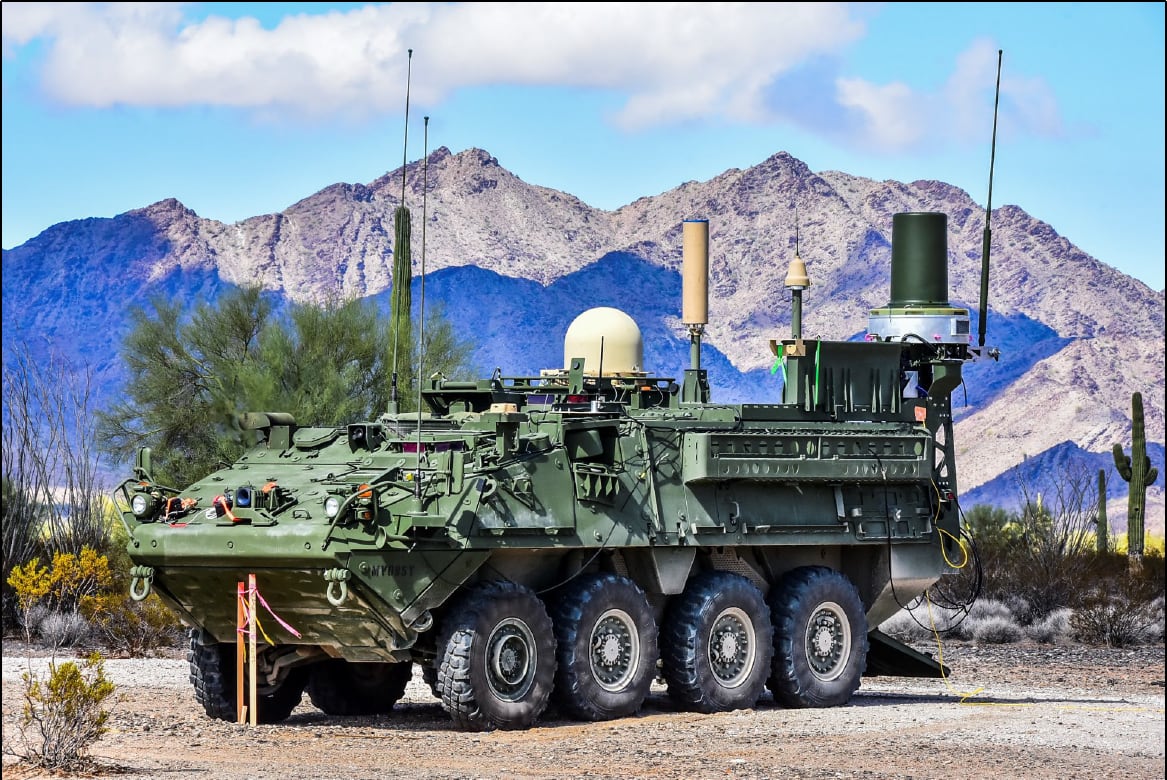WASHINGTON — In what some observers might view as back to the future, the U.S. Army is altering the way it fights to keep up with sophisticated adversaries, which means shifting from the brigade-centered focus of the last decade to bringing the division and corps levels into the fold.
As a result, new capabilities are under development to increase range, fight deeper and bolster presence on the nonphysical battlefield, such as the electromagnetic spectrum.
Officials said a fight against a nation-state like Russia or China must begin at the corps level, where the focus is destroying high-priority systems to lay the groundwork for lower echelons. They added that the corps level must eliminate these targets first, passing them to the lower echelons to include division and brigade, which are both designed for a closer fight to move the enemy back.
“We have got to be able to see deep. If we don’t have the ability to sense at the corps level, really what we’re doing is we’re deferring that fight down to the brigade level,” Col. Clint Tracy, III Corps cyber and electromagnetic activities chief, said during a Sept. 29 virtual panel hosted by the Association of Old Crows. “If we build the other way up, from the brigades to corps … they may not necessarily be equipped without additional enablers to kill those things in the battlespace.”
Enter what officials are calling the Terrestrial Layer System-Echelons Above Brigade, or TLS-EAB, formerly referred to as TLS-Extended Range.
Army leaders this week detailed the first initial notional concepts and timeline for the new capability, which will be mainly a division and corps asset capable of reaching and prosecuting targets that the TLS system at the brigade combat team level cannot.
“TLS-EAB is intended to provide commanders at echelons above brigade the ability to sense, provide improved precision geolocation, conduct non-kinetic fires and support kinetic targeting for a broad coverage of targets … [that] are unreachable by TLS at BCT,” Col. Jennifer McAfee, Army capability manager for terrestrial layer and identity, said during the same event. TLS-BCT, or Terrestrial Layer System-Brigade Combat Team, is the Army’s first brigade-focused, integrated signals intelligence, electronic warfare and cyber platform.
“TLS-EAB also provides defensive electronic attack to protect our critical nodes, i.e., our command posts and other critical nodes vulnerable to the adversary’s precision fires,” McAfee added.
She also said TLS-EAB will address several gaps in large-scale combat operations to include deep sensing to help target enemy systems in anti-access/area denial environments, and to conduct reconnaissance and security at long ranges.
It will also provide capabilities for signals intelligence and electronic warfare teams within the Multidomain Task Force’s Intelligence, Information, Cyber, Electronic Warfare and Space (I2CEWS) battalion, as well as signals intelligence and electronic warfare battalions at the division and corps levels.
How is TLS-EAB different from existing capabilities?
The key difference between TLS-EAB and other electronic warfare, intelligence and cyber platforms — both airborne or ground-based — is that the former protects static assets from enemy missiles and unmanned systems that use radar fusing and homing.
Officials said the new system will be broken into two broad threat categories: the aforementioned protection against precision-guided munitions dependent on the electromagnetic spectrum; and theater, corps and division targets to include ISR, command and control, low- and mid-altitude beyond-line-of-sight comminutions, navigation, and air and ground radars.
The service will achieve these effects through advanced electronic attack techniques, radio frequency-delivered cyber effects, military information support operations (formerly called psychological operations), and the deception of adversary sensors.
More granularly, TLS-EAB will be broken into two subsystems for those two missions: one for long-range collection, electronic support and effects; and one for defensive electronic attack. Each will include a trailer attached to the eventual vehicle the Army determines for TLS-EAB.
While a specific platform hasn’t specifically been identified for TLS-EAB, officials said they are eyeing something wheeled from the family of medium tactical vehicles.
Interoperability and long range
Moreover, the system will connect with other reconnaissance systems in an attempt to shorten the sensor-to-shooter timeline, which involves rapidly delivery sensitive data from sensors to the platforms or individuals who take action.
These include the Tactical Intelligence Targeting Access Node, or TITAN; the Multidomain Sensing System; TLS-BCT; the Electronic Planning and Management Tool; the Multifunction Electronic Warfare-Air Large; and the integrated tactical network.
TLS-EAB is one of the top priorities of the Army’s ISR Task Force, which is modernizing the service’s ability to see across huge ranges through a layered approach that involves the ground, air and space domains.
U.S. adversaries have invested in capabilities that aim to keep forces at bay, such as advanced missiles and radars. To allow American forces to penetrate those capabilities and move back ground-based adversaries, larger echelons such as the corps must be able to see and understand these regions in full, which could be over thousands of miles.
This also means sifting through all the noise in the congested electromagnetic spectrum to understand and prioritize specific targets.
As such, the corps level must see more of the spectrum than the brigade, said Tracy of III Corps, because if the higher echelons did their jobs right, there shouldn’t be a whole lot left for brigades to deal with in the non-kinetic realm when they are eventually deployed.
Timeline
Units aren’t expected to first receive TLS-EAB until at least fiscal 2022, the same year as TLS-BCT.
The current plan outlined by officials, which they stressed is all notional, is to have a total of 67 TLS-EABs: four per I2CEWS equaling 16; three per corps equaling nine; four per division equaling 40; and two at training locations.
The sketch provided by Army leaders is an industry day in January, with a draft request for proposals set for February and bids in October.
Mark Pomerleau is a reporter for C4ISRNET, covering information warfare and cyberspace.





